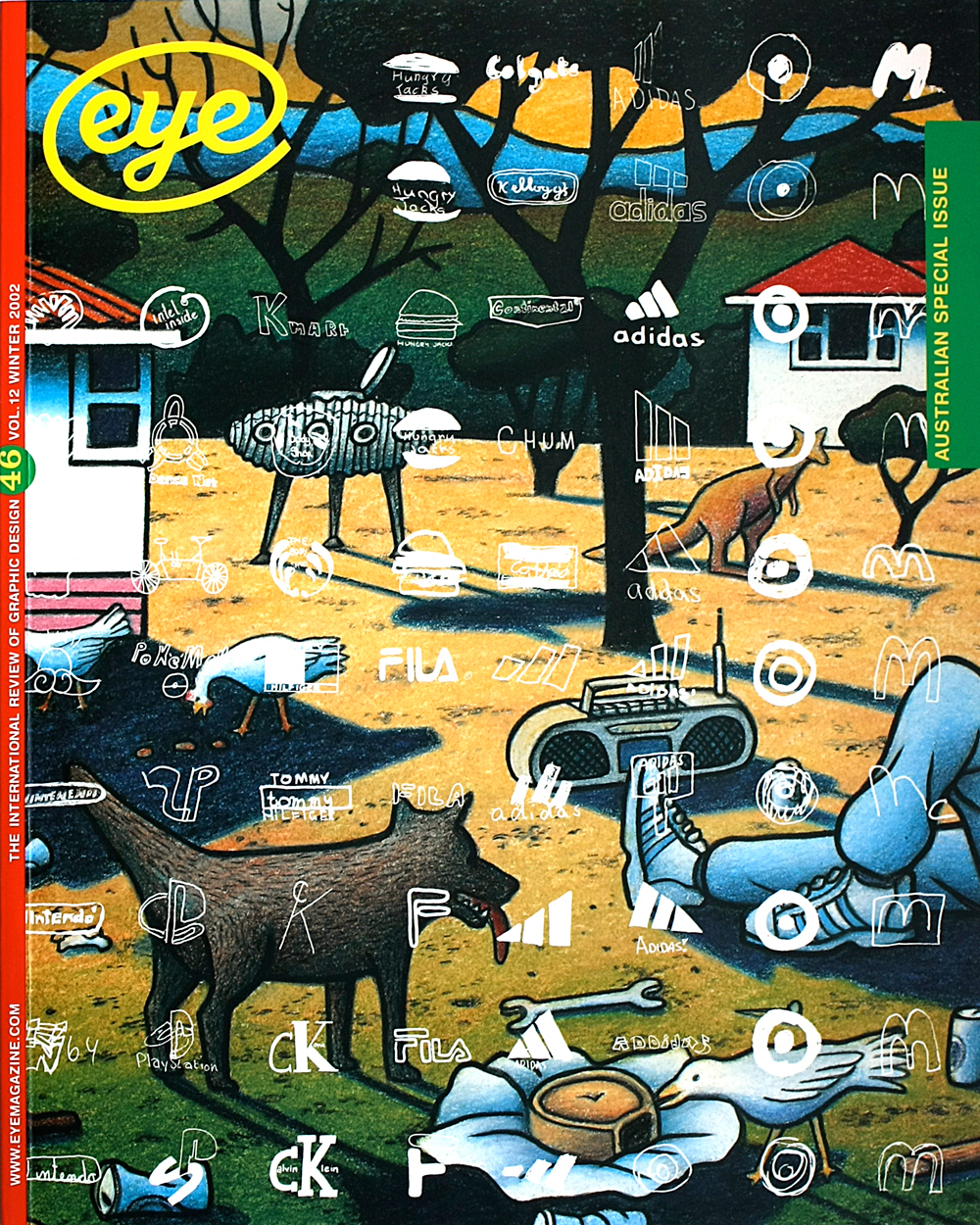Winter 2002
When in Rome: eat, drink and talk type
2002 Association Typographique Internationale (ATypI) Conference
Rome, 19-22 SeptemberSince January 2001, ATypI’s worldwide membership has had the advantage of its own email list to share views, experience and advice. This has proved a benefit to a membership which at times resembles a large family gathering (in all the best senses of the term), rather than an association of business people. However, nothing beats meeting like-minded people from around the world and sharing those views, experiences and advice first-hand.
For anyone interested in lettering, Rome has to be the perfect setting, so it is surprising then, that after 45 years of existence, this is the first time that Rome has been the venue for ATypI’s conference. The conference was held in the shadow of the Square Colosseum in the district of Eur (intended by Mussolini as the site for the planned Exposizione Universale di Roma in 1942) just 6km from the historic sites of Imperial Rome. A setting so full of contrasts and contradictions was perfect for such a mixed gathering of those interested in the broad subject of type and design.
This year’s conference had the theme ‘the shape of language’ and a wide range of speakers to discuss it. The conference proper was preceded by a day of optional events. The official programme offered a type technology forum moderated by John Hudson and Ross Mills; a type design master class led by Anno Fekkes; and tours of Rome or Ostia Antica. An unofficial alternative was a walk round key examples of Roman lettering, led by Paul Stiff. On the evening of the first day, the Prix Charles Peignot for excellence in type design was awarded to Jonathan Hoefler, whose acceptance speech had real ‘Oscar’ quality.
The programme proper ran from Friday morning until Sunday lunchtime and was arranged in four tracks: ‘International issues forum’, Italian design forum’, ‘Historical perspectives’ and ‘Think tank’. This presented timetabling problems: you were always going to miss something. However, the Italian delegates tended to fill the Italian design forum, and everyone else the other three, giving a slight ‘us & them’ feeling to proceedings.
There was a well balanced range of presentations, some of which were ‘show & tell’, some of which were more obviously educational. Full credit must be given to Garrett Boge, the programme co-ordinator, for that balance. A selection will give the flavour: Modern typography continues (Robin Kinross); public writing (Mauro Zennaro); typographic teaching tools on the Web (Jay Rutherford); investigating forged documents (Tom Phinney); Fascist lettering (Paul Shaw); the hand in type (Susan Skårsgard); typographic conventions (Anne Cowell); Giovan Francesco Cresci (James Mosely); calligraphy and cuisine in Renaissance Italy (Gillian Riley); the Euro currency symbol (Conor Mangat); OpenType and other smart font technologies in multi-script documents (Paul Nelson).
Alongside the presentations were various exhibitions – ‘The Type Directors’ Club’, ‘Treasures of St Bride Printing Library’ and ‘Bukva:raz’ (see below). Elsewhere, at the Biblioteca Nazionale, were two exhibitions: ‘Five masters of Italian design’ and ‘After Novarese: contemporary type design in Italy’, which were worth seeing. All of these could be sampled at leisure between presentations or during breaks in the programme. The general mood of the conference was helped no end by the availability of Italian coffee served throughout the day, and the excellent food and wine served at lunchtime. Social events in the evenings included an auction which raised money for ATypI publications, and a gala dinner in the Palazzo Lancellotti.
Bukva:raz was the result of ATypI’s own type design competition which took place last year to find 100 fonts that represented the best designs from 1997–2001. The competition was also a contribution by the organisation towards the UN ‘Year of dialogue among civilisations (2001)’. The results range from extensions to existing faces caused by the opportunities of new font formats (e.g. Syntax, Frutiger); revivals (e.g. Knockout, Founder’s Caslon); to genuinely new designs (e.g. Shaker, Finnegan) and many non-Latin scripts (e.g. Papaya, Asmik). As with any competition, the selection will amaze, anger and surprise in equal measure. The winners can be seen in Language Culture Type, edited by John D. Berry, with 150 pages of supporting essays.
Outside the conference umbrella, was of course Rome. Most delegates either arrived early for the conference, or stayed on, or did both. Neither city nor conference disappointed; both were educational and inspirational. Next year’s conference in Vancouver (24-28 September) has a hard act to follow.
Phil Banes, designer, teacher, London
First published in Eye no. 46 vol. 12 2002
Eye is the world’s most beautiful and collectable graphic design journal, published for professional designers, students and anyone interested in critical, informed writing about graphic design and visual culture. It is available from all good design bookshops and online at the Eye shop, where you can buy subscriptions and single issues.

